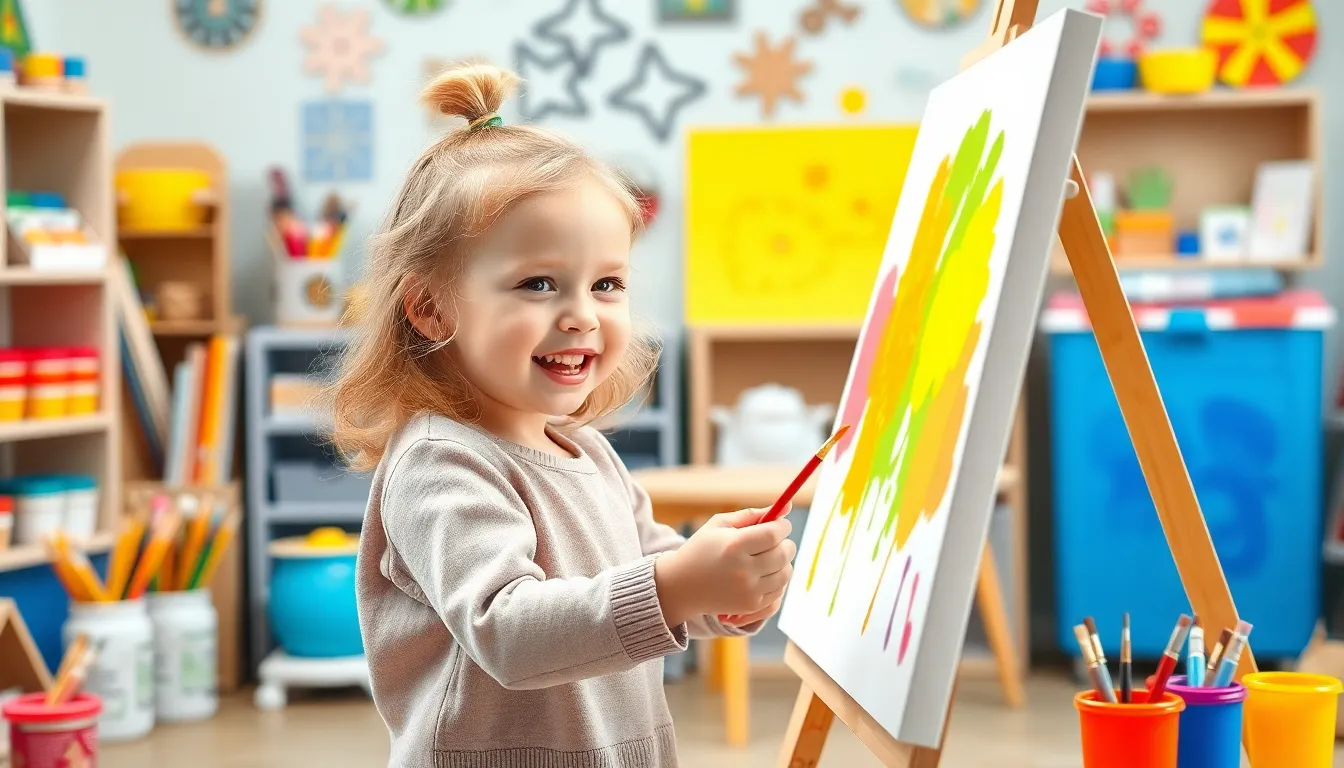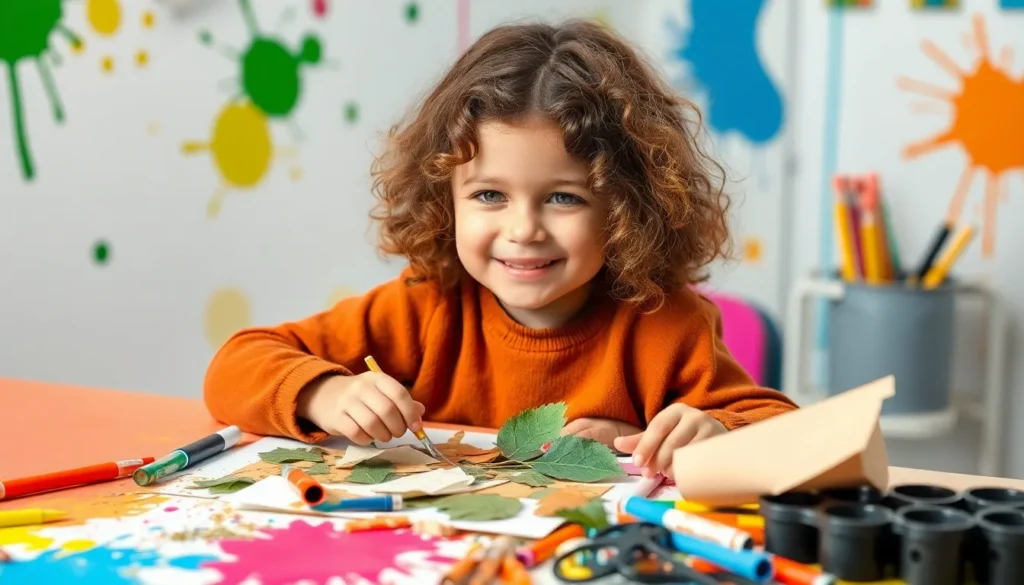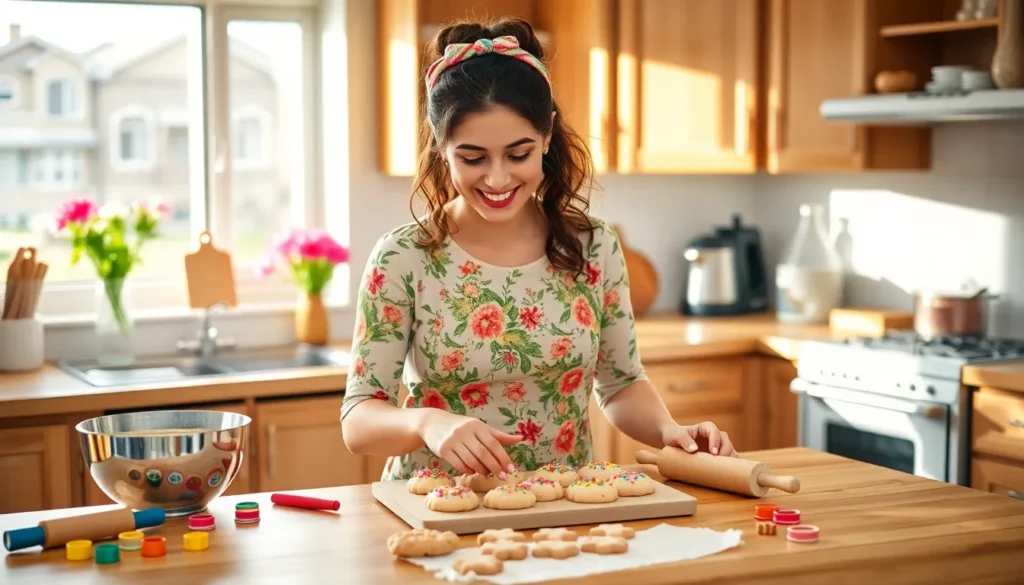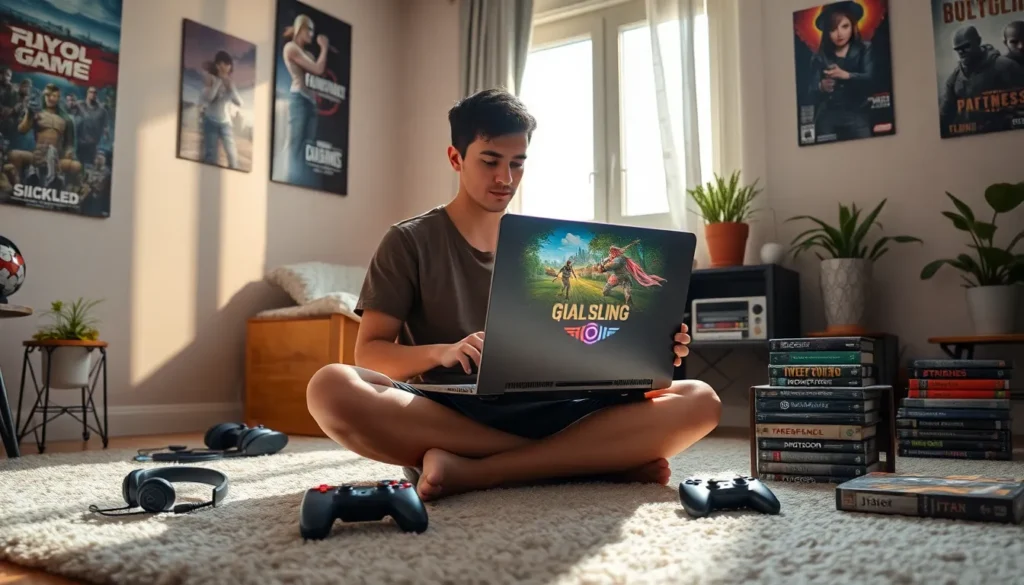Table of Contents
ToggleEvery parent knows that keeping preschoolers entertained can be a full-time job. Enter art projects—those magical moments where creativity meets chaos. Imagine your little one transforming a plain sheet of paper into a masterpiece that rivals Picasso, all while wearing a smock that looks like it survived a paintball fight.
Art projects for preschoolers aren’t just about finger paints and glitter explosions; they’re gateways to developing fine motor skills and sparking imagination. Plus, they offer a perfect excuse for parents to join in on the fun and unleash their inner child. So grab some supplies and get ready to dive into a world of colorful creativity that’ll have everyone laughing and learning. Who knew art could be this much fun?
Benefits Of Art Projects For Preschoolers
Art projects provide numerous advantages for preschoolers. These activities not only foster creativity but also enhance essential skills that contribute to overall development.
Enhancing Creativity
Art encourages preschoolers to think independently. Creating unique pieces allows children to explore their imagination. Choices in color, shape, and materials stimulate innovative thinking. Expressing themselves through art boosts confidence as they showcase their creations. Engaging in diverse art forms introduces various concepts, leading to deeper cognitive connections.
Developing Fine Motor Skills
Art projects play a vital role in fine motor skill development. Using scissors, brushes, or crayons strengthens hand-eye coordination. Manipulating small objects improves dexterity, crucial for everyday tasks. Gripping tools correctly helps build muscle control in young hands. Completing projects fosters concentration, enhancing focus during activities. Skills developed through art translate to better writing and self-care tasks as children grow.
Popular Art Projects For Preschoolers

Preschoolers thrive on hands-on activities that engage their imagination. Art projects provide countless opportunities for creativity and skill development.
Painting Activities
Painting activities serve as a great way for children to explore colors and textures. They can use finger paints, watercolors, or even sponge techniques to create vibrant masterpieces. Mixing colors demonstrates cause and effect, captivating young minds. Setting up a small easel allows them to paint while standing, promoting both balance and coordination. Using materials like paper, canvas, or fabric encourages versatility in artistic expression. Clean-up involves fun too, as kids enjoy washing their hands and brushes after creating.
Collage Creations
Collage creations combine various materials, allowing preschoolers to express themselves in unique ways. They can use magazines, colored paper, fabric scraps, or natural elements like leaves and flowers. This project builds fine motor skills as they cut, tear, and glue pieces together. Arranging materials fosters critical thinking as children choose how to compose their artwork. Presenting their finished collages creates opportunities for verbal expression and boosts confidence. Encouraging creativity through collages allows for limitless artistic exploration.
Easy Art Projects That Require Minimal Supplies
Art projects don’t need extensive materials to be fun and engaging for preschoolers. Below are two easy options that utilize items already available at home or in nature.
Nature-Based Projects
Nature offers a variety of supplies for creative exploration. Leaves, twigs, and flowers create unique collages when glued onto paper. Paint can also transform rocks into colorful creatures or patterns. Children can gather natural items during walks, promoting both art creation and outdoor activity. Constructing a nature mobile involves threading gathered items onto string, enhancing fine motor skills and creativity.
Recycled Materials Art
Recycled materials make excellent art supplies, allowing kids to utilize everyday items creatively. Scraps of cardboard or paper serve as canvases for drawings or collages. Empty plastic bottles transform into imaginative sculptures or puppets. Additionally, using bottle caps as stamps introduces fun patterns in painting projects. With minimal guidance, preschoolers develop critical thinking skills while learning about recycling and sustainability.
Tips For Successful Art Sessions
Successful art sessions require careful planning and an understanding of preschoolers’ needs. Fostering a positive experience enhances creativity and engagement.
Creating A Safe Environment
Creating a safe environment is crucial for successful art sessions. Clear the workspace of any hazards and provide child-friendly materials. Non-toxic paints and scissors designed for small hands offer both safety and usability. Set boundaries for space and materials, preventing clutter and distractions. Supervision during activities ensures children stay safe and focus on their creative tasks. Keeping supplies organized improves access and reduces frustration. Proper cleanup practices teach responsibility while establishing a routine for the activity.
Encouraging Expression
Encouraging expression allows preschoolers to explore their creativity freely. Provide various materials, such as crayons, markers, and paint, to inspire different artistic techniques. Open-ended prompts, like asking what colors they associate with feelings, stimulate imaginative responses. Allowing children to lead each project fosters independence and boosts confidence. Celebrating individual creations affirms self-esteem and motivates further expression. Discussing their artwork encourages verbal skills while building a connection between expression and communication. Allowing time for reflection on their pieces helps develop critical thinking and observation skills.
Art projects for preschoolers offer a wonderful avenue for creativity and skill development. Engaging in these activities not only nurtures artistic expression but also strengthens fine motor skills and cognitive abilities. Parents who participate in these projects create lasting memories while fostering a love for art in their children.
By incorporating simple and accessible materials, families can explore various art forms together. Whether it’s painting, collaging, or nature-inspired crafts, each project presents an opportunity for learning and growth. The joy of creating art together enriches the parent-child bond and cultivates a supportive environment for imaginative exploration. Embracing art in early childhood truly lays the foundation for a lifetime of creativity and confidence.







